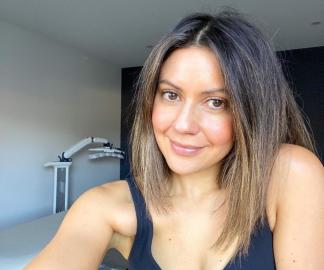
Out of all the skin types, combination skin is one of the most common I see in my skin clinic.
It happens to be my skin type, too!
Think of combo skin as the Gemini of the skin types. Or the halfway point between dry skin and oily skin.
With cheeks crying out for moisture and a self-saucing T-zone, figuring out a skin care routine for combination skin can be tricky.
So, I wanted to recap some of the combination skin type mistakes I've seen in my work as a dermal therapist... and made as a combo skin-haver.
Oh, and I'll tell you the best practices and products for combination skin to try instead!
What Is Combination Skin?
The thing with combination skin is you’ll know if you have it.
Every person is different, and the amount of oil you produce will depend on the activity of your sebaceous (oil) glands.
But generally, people with combination skin have an oily T-zone (forehead, nose and chin), while the cheeks are a little drier.
You may also notice you have larger pores in some areas of your face, but not in others.
Ditto with dehydration, dry or flaky patches of skin, and acne breakouts.
Rather than having one consistently across the face, you're most likely experiencing all of the above in different localised areas.
Combination skin may also be oiler in summer and drier in winter, and lifestyle factors can affect your combination skin type a lot.
Eg. You might start breaking out when you're on your period, leading you to think your skin is oily, only to swing back the other way with dryness once your period ends.
How to Look After Combination Skin.
Now we know what some of the common combination skin type characteristics are, let’s chat about skin care for combination skin and how to look after it.
Having the right skin care is very important for combination skin types, because using the wrong skin care can cause imbalances in certain areas.
Skin care for combination skin is a bit of a see-saw, so it's about knowing how to use your products and learning to listen to your ever-changing skin.
Even though it's a very common skin type, I see many of the same mistakes time and time again when I talk to my clients with combo skin.
Here is a basic guide for combination skin, including my tips for building a skin care routine for combination skin.
Watch the video below for the quick version, or read on for all the details.




